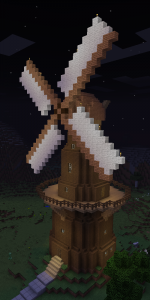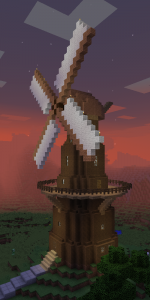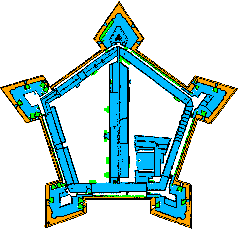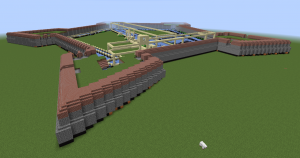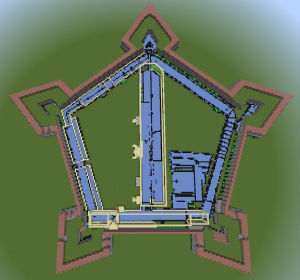There are a lot of hearsay and rumours on what is the most efficient mining technique in minecraft. I decided to test them.
Setup
The setup consists of 4 chunks, adding to 64×64 blocks, with a height of 16, from the bottom of the world up. I tried with one chunk only, but the results were inconclusive, since I managed to stumble upon chunks that did not contain certain resources at all. Since diamonds happen to be the most sought-after resource, and they only appear on height-levels 16 and below, I capped the setup there. These 4 chunks were then copied with mcedit, it’s resources counted with the “analyze” function of mcedit and then mined according to specific patterns. After this, I used mcedit again to count the new remaining totals.
The chunks were chosen more or less randomly, but so that they did not contain any lava or air. The setup has 65536 blocks in total, of which are 12222 bedrock, resulting in 53314 mineable blocks.
Efficiency is determined by the most resource-blocks mined for the least amount of blocks mined in total. It is completely irrelevant whether the chunks still contain resources after mining, as the minecraft world is infinite.
The Patterns
The patterns were aligned so that they cover as much of the height up to 16 blocks and down to bedrock; they were also aligned so that bedrock wouldn’t disturb the mining too much, so only the pattern with peekholes actually has tunnels within the uppermost layer where bedrock can occur, because since there are very few tunnels, this was deemed acceptable.
The green blocks signify visible blocks, red invisible ones. The bottom is left red because it consists mainly of bedrock.
Tunnels separated by two blocks, vertically aligned

Theoretical amount of tunnel air-blocks is 11264, visible are 27136 other blocks, per tunnel air-block are 2.41 blocks visible. Coverage of mineable blocks is 72%.
Usually this is chosen by inexperienced players, who think they do have to get every resource within a certain space.
Tunnels separated by two blocks, vertically diagonally aligned

Theoretical amount of tunnel air-blocks is 11008, visible are 32704 other blocks, per tunnel air-block are 2.97 blocks visible. Coverage of mineable blocks is 82%.
This makes it immediately clear that this option is much better than the first version. For about the same amount of blocks mined, the ratio to visible blocks and the overall coverage is much bigger. Actually, depending on how the two patterns are aligned to each other, it is possible that both need exactly the same amount of tunnel air-blocks; and this pattern covers 20% more space.
So if you still think you need to get every resource within a certain space, this is still much better a pattern than the above.
Tunnels separated by three blocks, diagonally aligned, one space

Theoretical amount of tunnel air-blocks is 8192, visible are 23552 other blocks, per tunnel air-block are 2.875 blocks visible. Coverage of mineable blocks is 59%.
The theory behind this is, that ores usually appear in veins, consisting of 2 to 20 blocks within some three.dimensional space. Thus the chance to stumble upon ore should not be greatly diminished by the added space.
Tunnels separated by three blocks, diagonally aligned, two spaces

Theoretical amount of tunnel air-blocks is 6144, visible are 18432 other blocks, per tunnel air-block are 3 blocks visible. Coverage of mineable blocks is 46%.
The same as above, but with one space added in the vertical direction.
Tunnels, separated by ten blocks, with peekholes every two blocks

Theoretical amount of tunnel air-blocks is 7944, visible are 23704 other blocks, per tunnel air-block are 2.97 blocks visible. Coverage of mineable blocks is 59%.
This also relies on the fact that ores rarely only occupy one block in a certain axis. Also, the use of peekholes instead of tunnels leads to less tunneling that needs to be done, for very similar numbers as the tunnels separated by three blocks, diagonally aligned with one space. This one also has the added benefit that mobs cannot spawn in the peekholes.
Tests
From the above, one could easily conclude that the pattern with the biggest visibility per tunnel-block or the pattern with the biggest coverage would be the most efficient. But this would only be the case if resource were distributed uniformly; instead they’re distributed random, and in bunches. Since we don’t have any numbers or mathematical model on that, we test instead.
Mined was every block needed for digging the tunnels, and every visible resource block from there. If mining that resource block turned another resource block visible, that one was mined too. Sometimes another block was mined as well, if that was needed to get to a visible resource block.
Baseline is our setup, which 53314 mineable blocks, of which we have:
Uninteresting Blocks 51518
Gold Ore 47
Iron Ore 382
Coal Ore 818
Lapis Ore 40
Diamond Ore 38
Redstone Ore 471
And these are the results of the first two tests done. I will refrain from testing the 2 rectangular pattern, since its obviously inferior to the 2 diagonal one. I might do the other two pattern as I find time. Numbers are what’s left in the ground after mining:
2 Diagonal Peekhole
Uninteresting Blocks 40613 43531
Air (Tunneled out) 12497 9710
Gold Ore 4 8
Iron Ore 48 46
Coal Ore 89 83
Lapis Ore 4 1
Diamond Ore 5 4
Redstone Ore 56 111
These are very similar, except the first version needed a lot more tunneling for the same amount of resources. And the first version covers a whopping 82% of the whole space, while the second one covers only 59%; which makes it quite obvious there is something going on with ore bunching.
This makes the pattern with peekholes roughly 128% as efficient, and just as thorough, as the tunnels separated by two blocks arranged diagonally.
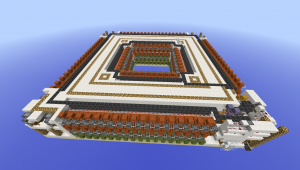
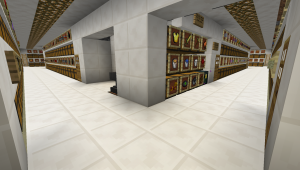
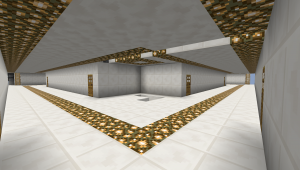
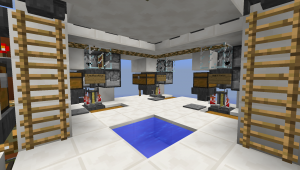
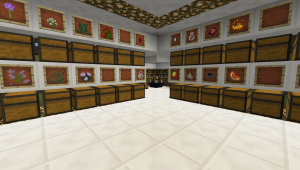
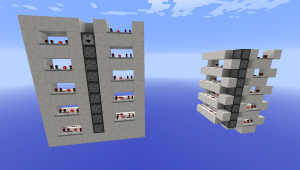
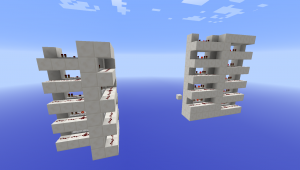





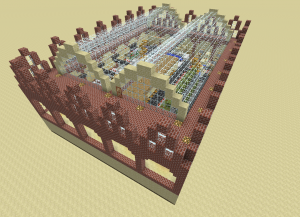 1891 Fruit Co. Building
1891 Fruit Co. Building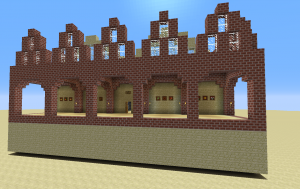 Front
Front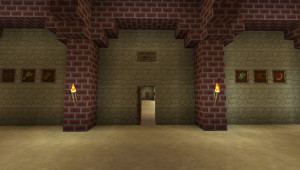 Entrance
Entrance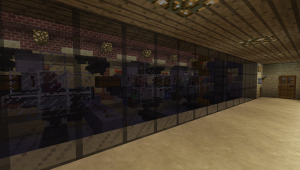 Reception View
Reception View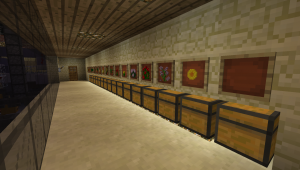 Produce
Produce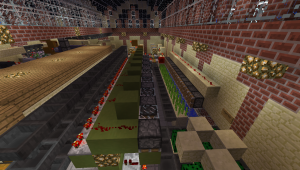 Factory Floor Right
Factory Floor Right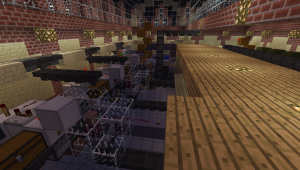 Factory Floor Left
Factory Floor Left